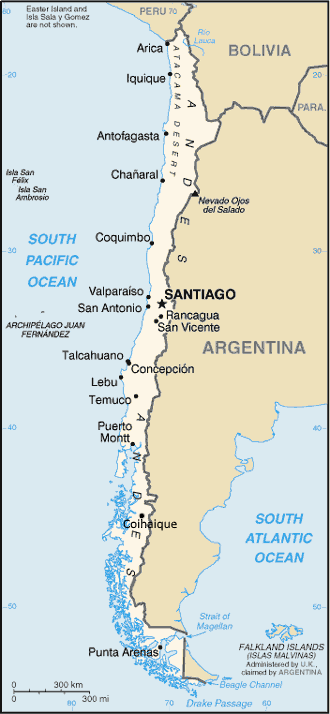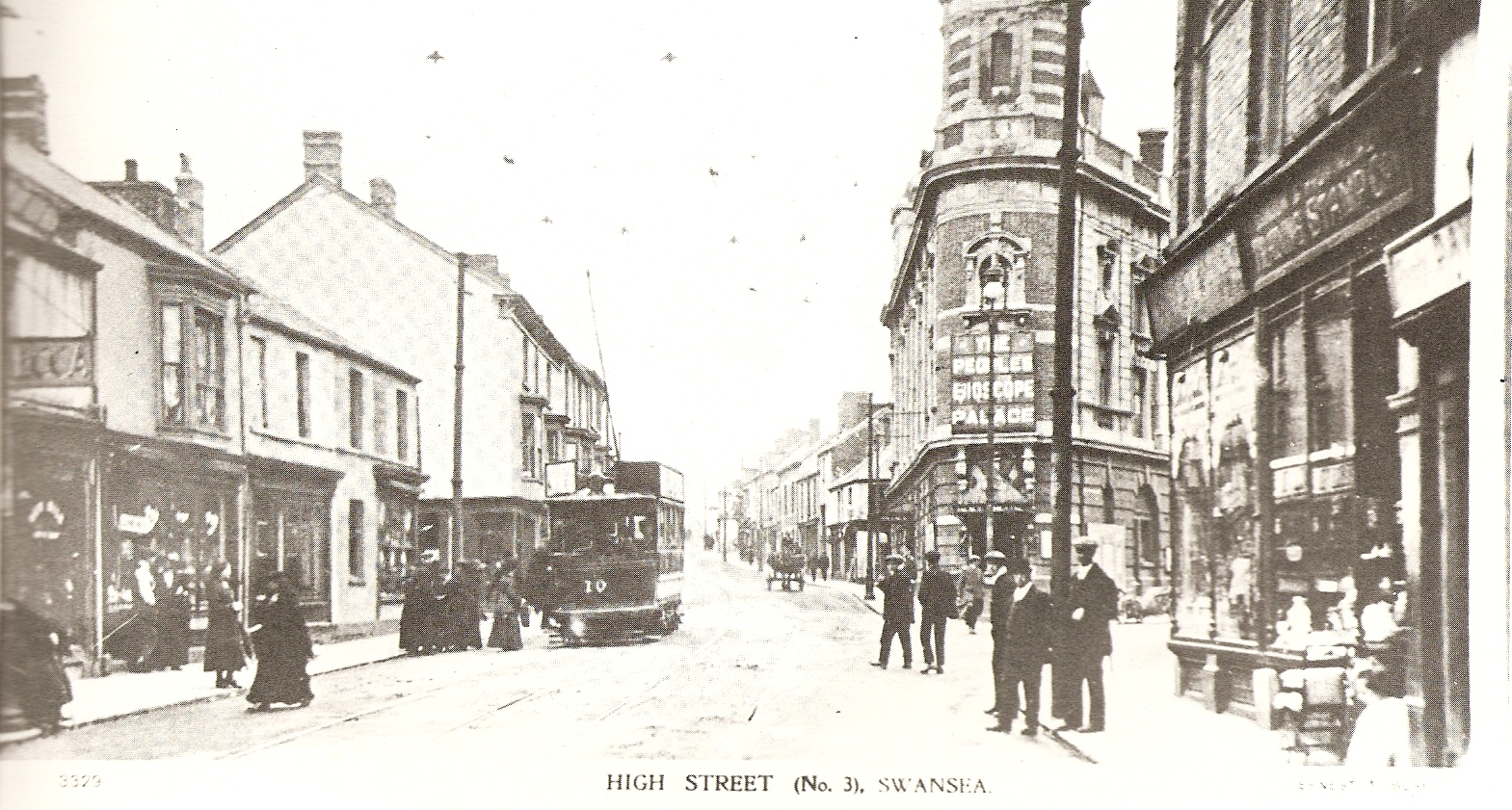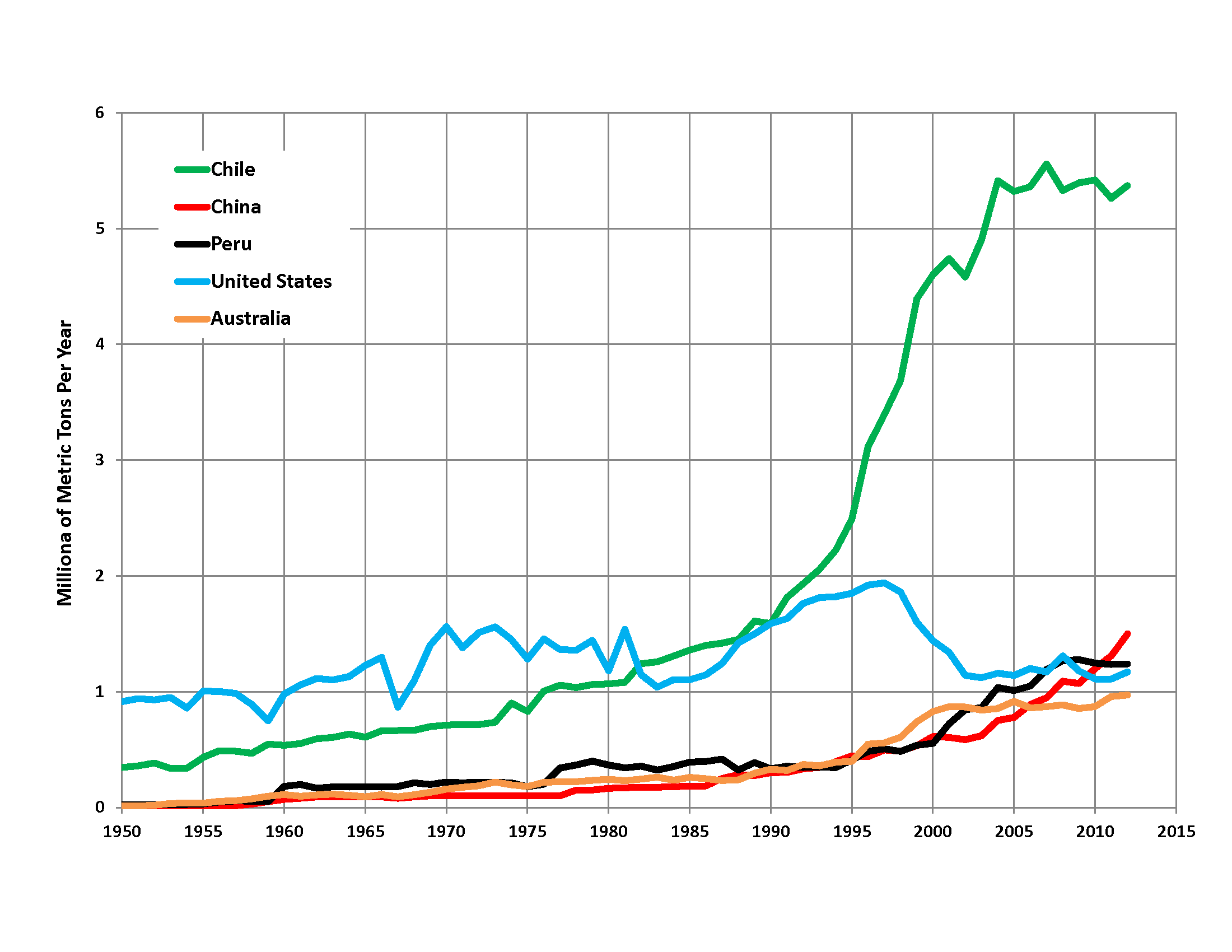|
Huasco, Chile
Huasco () is a Chilean city and commune, in the Huasco Province, Atacama Region. It is the central town of a mining district dominated by medium-scale mining. The port city of Huasco is located 50 km west of Vallenar and close to the town of ''Huasco Bajo'', which lies on the southern bank of the Huasco River and only a few kilometers from its mouth. The coastal route between Huasco Bajo and Carrizal Bajo provides one of the two accesses to Llanos de Challe National Park. The port was used between 1851 and 1873 to ship copper ore, copper regulus, alpaca wool and hides round Cape Horn to Swansea, Glamorgan and Wales. Demographics According to the 2002 census of the National Statistics Institute, Huasco had 7,945 inhabitants (3,999 men and 3,946 women). Of these, 6,445 (81.1%) lived in urban areas and 1,500 (18.9%) in rural areas. The population grew by 5.7% (429 persons) between the 1992 and 2002 censuses. Administration As a commune, Huasco is a third-level admini ... [...More Info...] [...Related Items...] OR: [Wikipedia] [Google] [Baidu] |
List Of Cities In Chile
This is a list of cities in Chile. A city is defined by Chile's National Statistics Institute (Chile), National Statistics Institute (INE) as an "urban entity"An "urban entity" is defined by Chile's National Statistics Institute (Chile), National Statistics Institute as a concentrated group of dwellings with over 2,000 inhabitants, or between 1,001 and 2,000 inhabitants if 50% or more of its population is economically active, dedicated to Secondary sector of the economy, secondary and/or Tertiary sector of the economy, tertiary activities. Exceptionally, populated centers dedicated to tourism and recreation with over 250 concentrated dwellings and that do not meet the population requirement are considered urban. with more than 5,000 inhabitants. This list is based on a June 2005 report by the INE based on the 2002 census which registered 239 cities across the country. Complete list of cities by region Largest urban agglomerations This list includes conurbations, "absorption ... [...More Info...] [...Related Items...] OR: [Wikipedia] [Google] [Baidu] |
Vallenar
Vallenar is a city and commune in Atacama Region, Chile. It is the capital of the Huasco Province and is located in the valley of the Huasco River. Vallenar has 52,000 inhabitants. Its main activities are farming and mining. It was founded as San Ambrosio de Ballenary by Ambrose O'Higgins in 1789, after his birthplace in Ballynary in County Sligo, Ireland. Llanos de Challe National Park is located northwest of the city of Vallenar. Demographics According to the 2002 census by the National Statistics Institute, Vallenar had 48,040 inhabitants (23,284 men and 24,756 women). Of these, 43,750 (91.1%) lived in urban areas and 4,290 (8.9%) in rural areas. The population grew by 1.7% (792 persons) between the 1992 and 2002 censuses. Administration As a commune, Vallenar is a third-level administrative division of Chile administered by a municipal council, headed by an alcalde who is directly elected every four years. The 2008-2012 alcalde is Cristian Tapia Ramos. Within the ... [...More Info...] [...Related Items...] OR: [Wikipedia] [Google] [Baidu] |
Administrative Division Of Chile
The administrative division or territorial organization of Chile exemplifies characteristics of a unitary state. State administration is functionally and geographically decentralized, as appropriate for each authority in accordance with the law. For the interior government and administration within the State, the territory of the republic has been divided into 16 regions (''regiones''), 56 provinces (''provincias'') and 346 communes (''comunas'') since the 1970s process of reform, made at the request of the National Commission on Administrative Reform (''Comisión Nacional de la Reforma Administrativa'' or CONARA). State agencies exist to promote the strengthening of its regionalization, equitable development and solidarity between regions, provinces and communes within the nation. Since 2005, the creation, abolition and designation of regions, provinces and communes, the altering of their boundaries, and the establishment of the regional and provincial capitals are part of ... [...More Info...] [...Related Items...] OR: [Wikipedia] [Google] [Baidu] |
Rural Area
In general, a rural area or a countryside is a geographic area that is located outside towns and cities. Typical rural areas have a low population density and small settlements. Agricultural areas and areas with forestry are typically described as rural, as well as other areas lacking substantial development. Different countries have varying definitions of ''rural'' for statistical and administrative purposes. Rural areas have unique economic and social dynamics due to their relationship with land-based industry such as agriculture, forestry, and resource extraction. Rural economics can be subject to boom and bust cycles and vulnerable to extreme weather or natural disasters, such as droughts. These dynamics alongside larger economic forces encouraging urbanization have led to significant demographic declines, called rural flight, where economic incentives encourage younger populations to go to cities for education and access to jobs, leaving older, less educated and ... [...More Info...] [...Related Items...] OR: [Wikipedia] [Google] [Baidu] |
Urban Area
An urban area is a human settlement with a high population density and an infrastructure of built environment. Urban areas originate through urbanization, and researchers categorize them as cities, towns, conurbations or suburbs. In urbanism, the term "urban area" contrasts to rural areas such as villages and hamlet (place), hamlets; in urban sociology or urban anthropology, it often contrasts with natural environment. The development of earlier predecessors of modern urban areas during the urban revolution of the 4th millennium BCE led to the formation of human civilization and ultimately to modern urban planning, which along with other human activities such as exploitation of natural resources has led to a human impact on the environment. Recent historical growth In 1950, 764 million people (or about 30 percent of the world's 2.5 billion people) lived in urban areas. In 2009, the number of people living in urban areas (3.42 billion) surpassed the number living in rural ... [...More Info...] [...Related Items...] OR: [Wikipedia] [Google] [Baidu] |
National Statistics Institute (Chile)
The National Statistics Institute of Chile (, INE) is a state-run organization of the Government of Chile, created in the second half of the 19th century and tasked with performing a general census of population and housing, then collecting, producing and publishing official demographic statistics of people in Chile, in addition to other specific tasks entrusted to it by law. Background Its antecedents lie in the initiatives of president Manuel Bulnes and his minister, Manuel Rengifo, to draw up the second population census and obtain statistical data of the country. By Decree No. 18 March 27, 1843, the Office of Statistics was created, Ministry of the Interior to provide knowledge of the departments and provinces. It put the INE in charge of producing the national population census every 10 years, as required by the Census Act of July 12, 1843. Law No. 187 of September 17, 1847 established the office as a permanent body of the state. By 1853, it was legally required that each ... [...More Info...] [...Related Items...] OR: [Wikipedia] [Google] [Baidu] |
Census
A census (from Latin ''censere'', 'to assess') is the procedure of systematically acquiring, recording, and calculating population information about the members of a given Statistical population, population, usually displayed in the form of statistics. This term is used mostly in connection with Population and housing censuses by country, national population and housing censuses; other common censuses include Census of agriculture, censuses of agriculture, traditional culture, business, supplies, and traffic censuses. The United Nations (UN) defines the essential features of population and housing censuses as "individual enumeration, universality within a defined territory, simultaneity and defined periodicity", and recommends that population censuses be taken at least every ten years. UN recommendations also cover census topics to be collected, official definitions, classifications, and other useful information to coordinate international practices. The United Nations, UN's Food ... [...More Info...] [...Related Items...] OR: [Wikipedia] [Google] [Baidu] |
Wales
Wales ( ) is a Countries of the United Kingdom, country that is part of the United Kingdom. It is bordered by the Irish Sea to the north and west, England to the England–Wales border, east, the Bristol Channel to the south, and the Celtic Sea to the south-west. , it had a population of 3.2 million. It has a total area of and over of Coastline of Wales, coastline. It is largely mountainous with its higher peaks in the north and central areas, including Snowdon (), its highest summit. The country lies within the Temperate climate, north temperate zone and has a changeable, Oceanic climate, maritime climate. Its capital and largest city is Cardiff. A distinct Culture of Wales, Welsh culture emerged among the Celtic Britons after the End of Roman rule in Britain, Roman withdrawal from Britain in the 5th century, and Wales was briefly united under Gruffudd ap Llywelyn in 1055. After over 200 years of war, the Conquest of Wales by Edward I, conquest of Wales by King Edward I o ... [...More Info...] [...Related Items...] OR: [Wikipedia] [Google] [Baidu] |
Glamorgan
Glamorgan (), or sometimes Glamorganshire ( or ), was Historic counties of Wales, one of the thirteen counties of Wales that existed from 1536 until their abolishment in 1974. It is located in the South Wales, south of Wales. Originally an early medieval petty kingdom of varying boundaries known in Welsh as Kingdom of Morgannwg, Morgannwg (or Glywysing), which was then invaded and taken over by the Anglo-Normans, Normans as the Lordship of Glamorgan. The area that became known as Glamorgan was both a rural, pastoral area, and a conflict point between the Normans, Norman lords and the Welsh princes. It was defined by a large concentration of castles. After falling under English rule in the 16th century, Glamorgan became a more stable county, and exploited its natural resources to become an important part of the Industrial Revolution. Glamorgan was the most populous and industrialised county in Wales, and was once called the "crucible of the Industrial Revolution", as it contain ... [...More Info...] [...Related Items...] OR: [Wikipedia] [Google] [Baidu] |
Swansea
Swansea ( ; ) is a coastal City status in the United Kingdom, city and the List of urban areas in the United Kingdom, second-largest city of Wales. It forms a Principal areas of Wales, principal area, officially known as the City and County of Swansea (). The city is the List of cities in the United Kingdom, twenty-eighth largest in the United Kingdom. Located along Swansea Bay in south-west Wales, with the principal area covering the Gower Peninsula, it is part of the Swansea Bay (region), Swansea Bay region and part of the Historic counties of Wales, historic county of Glamorgan and the ancient Welsh commote of Gŵyr. The principal area is the second most List of Welsh principal areas by population, populous local authority area in Wales, with an estimated population of in . Swansea, along with Neath and Port Talbot, forms the Swansea urban area, with a population of 300,352 in 2011. It is also part of the Swansea Bay City Region. During the 19th-century industrial heyday, ... [...More Info...] [...Related Items...] OR: [Wikipedia] [Google] [Baidu] |
Alpaca Wool
Alpaca fleece is the natural fiber harvested from an alpaca. There are two different types of alpaca fleece. The most common fleece type comes from a Huacaya. Huacaya fiber grows and looks similar to sheep wool in that the animal looks "fluffy". The second type of alpaca is Suri and makes up less than 10% of the South American alpaca population. Suri fiber is more similar to natural silk and hangs off the body in locks that have a dreadlock appearance. While both fibers can be used in the worsted milling process using light weight yarn or thread, Huacaya fiber can also be used in a woolen process and spun into various weight yarns. It is a soft, durable, luxuriousQuiggle, Charlotte. "Alpaca: An Ancient Luxury." ''Interweave Knits'' Fall 2000: 74-76. and silky natural fiber. While huacaya fiber is similar to sheep's wool, it is warmer, not prickly, and has no lanolin, which makes it hypoallergenic.Stoller, Debbie, ''Stitch 'N Bitch Crochet'', New York: Workman, 2006, p. 18. A ... [...More Info...] [...Related Items...] OR: [Wikipedia] [Google] [Baidu] |
Copper Mining In Chile
Chile is the world's largest producer of copper and has been so uninterruptedly since 1983. This activity provides a substantial part of the Chilean state's revenue: slightly less than 6% in 2020, with state-owned copper company Codelco alone generating 2.6% of state revenue. Mining of copper in Chile is done chiefly on giant low-grade porphyry copper deposits which are primarily mined by the following companies; Codelco, BHP, Antofagasta Minerals, Anglo American plc, Anglo American and Glencore. Together these companies stood for 83.6% of the copper output in Chile in 2019 and many copper mining companies are joint ventures involving one at least one of these. Medium-scale mining in Chile, which focuses mainly on copper, produced about 4.5% of the copper mined in the country from 2017 to 2021. Copper is also the main product of small-scale mining in Chile, with about 95% of small-scale miners working in copper mining. One estimate puts the number of active copper mines in Chile ... [...More Info...] [...Related Items...] OR: [Wikipedia] [Google] [Baidu] |





